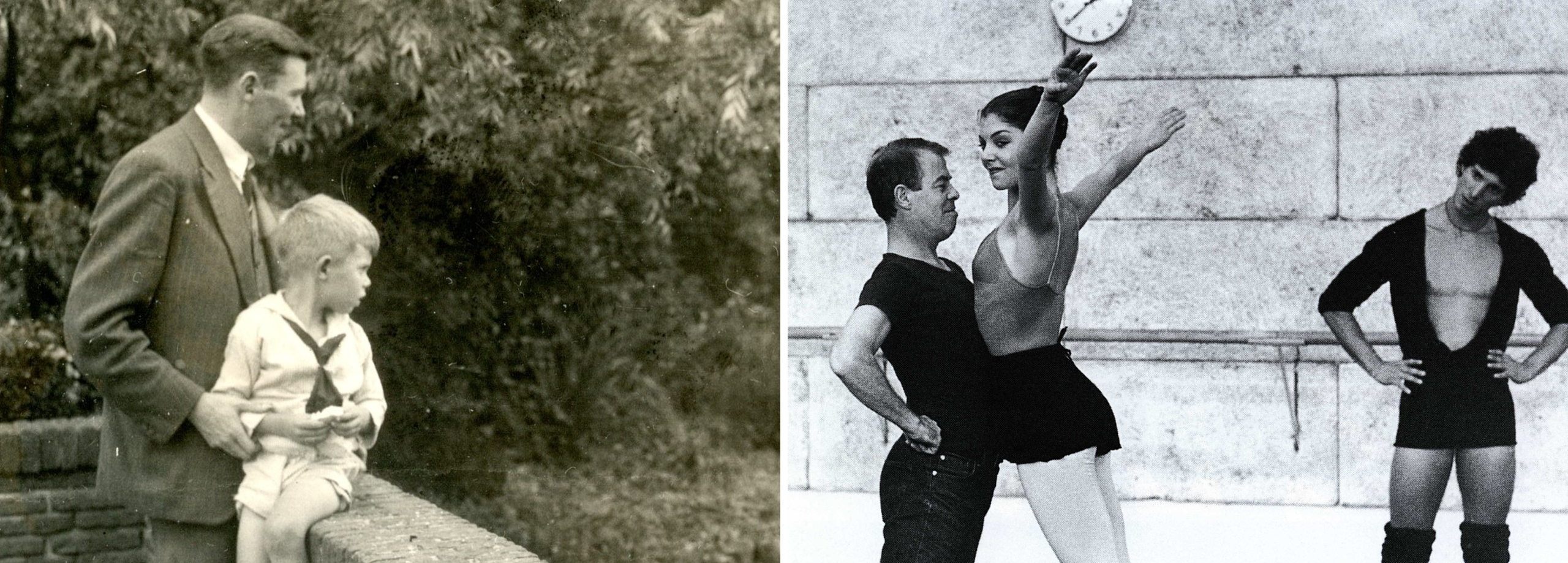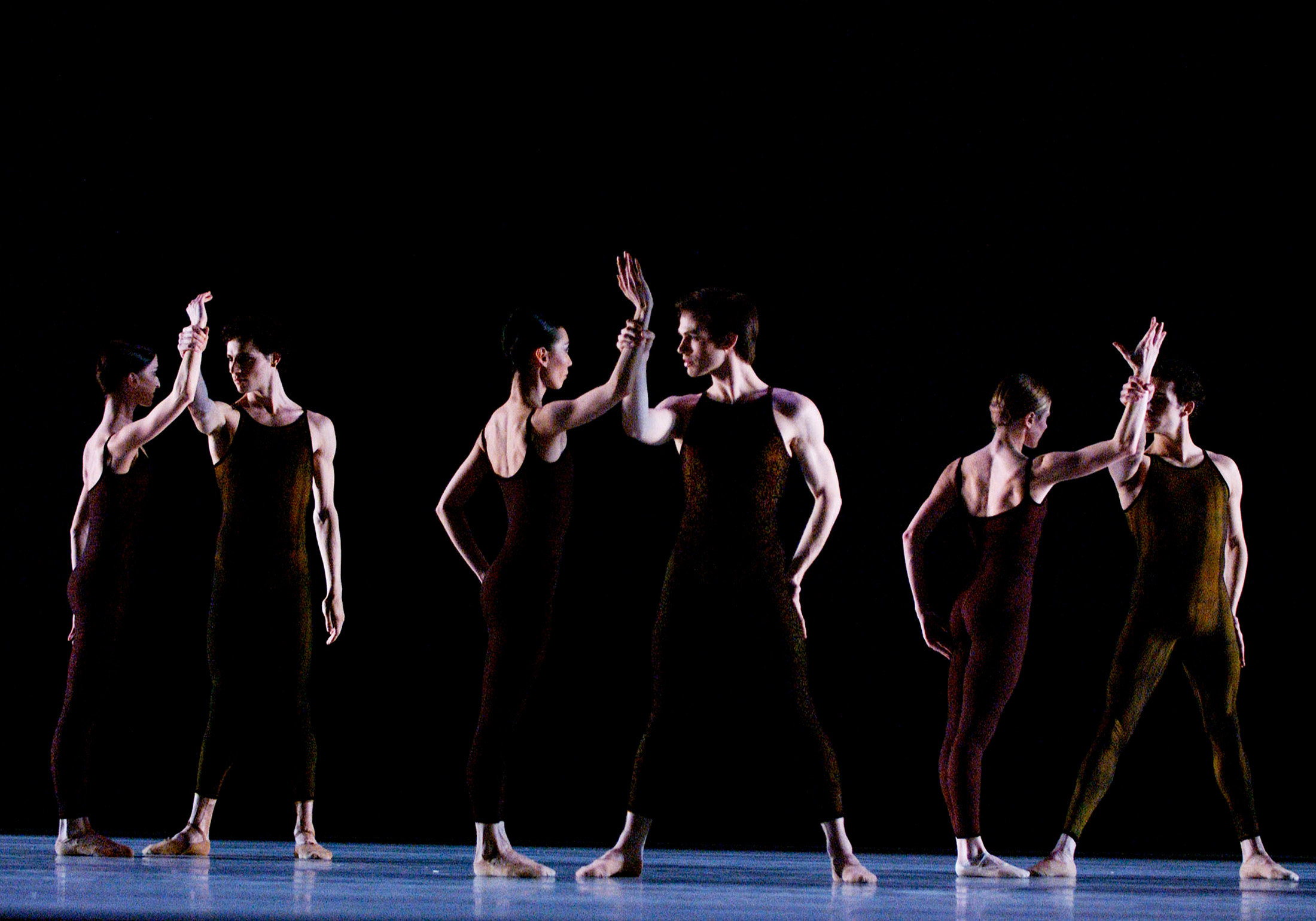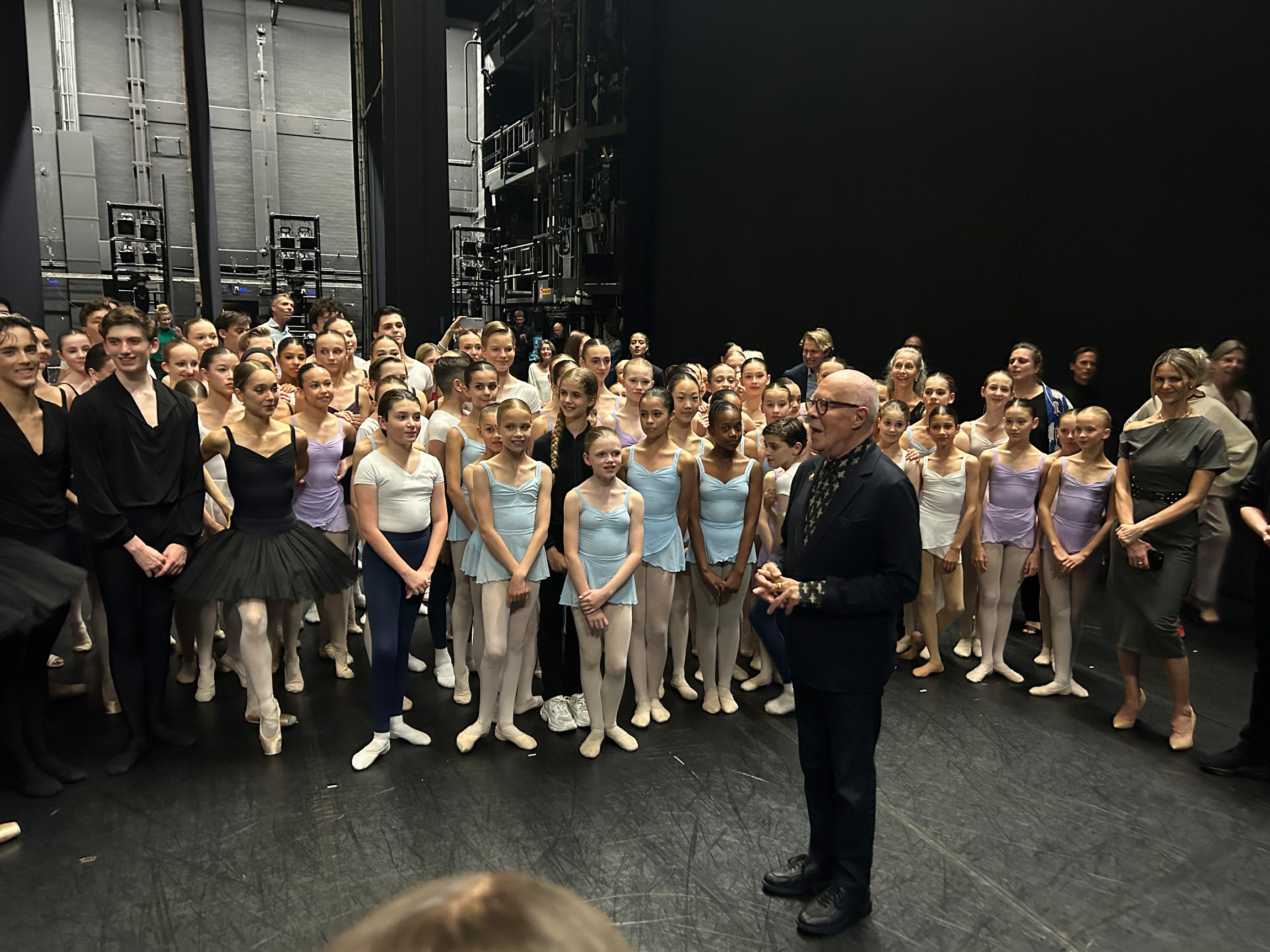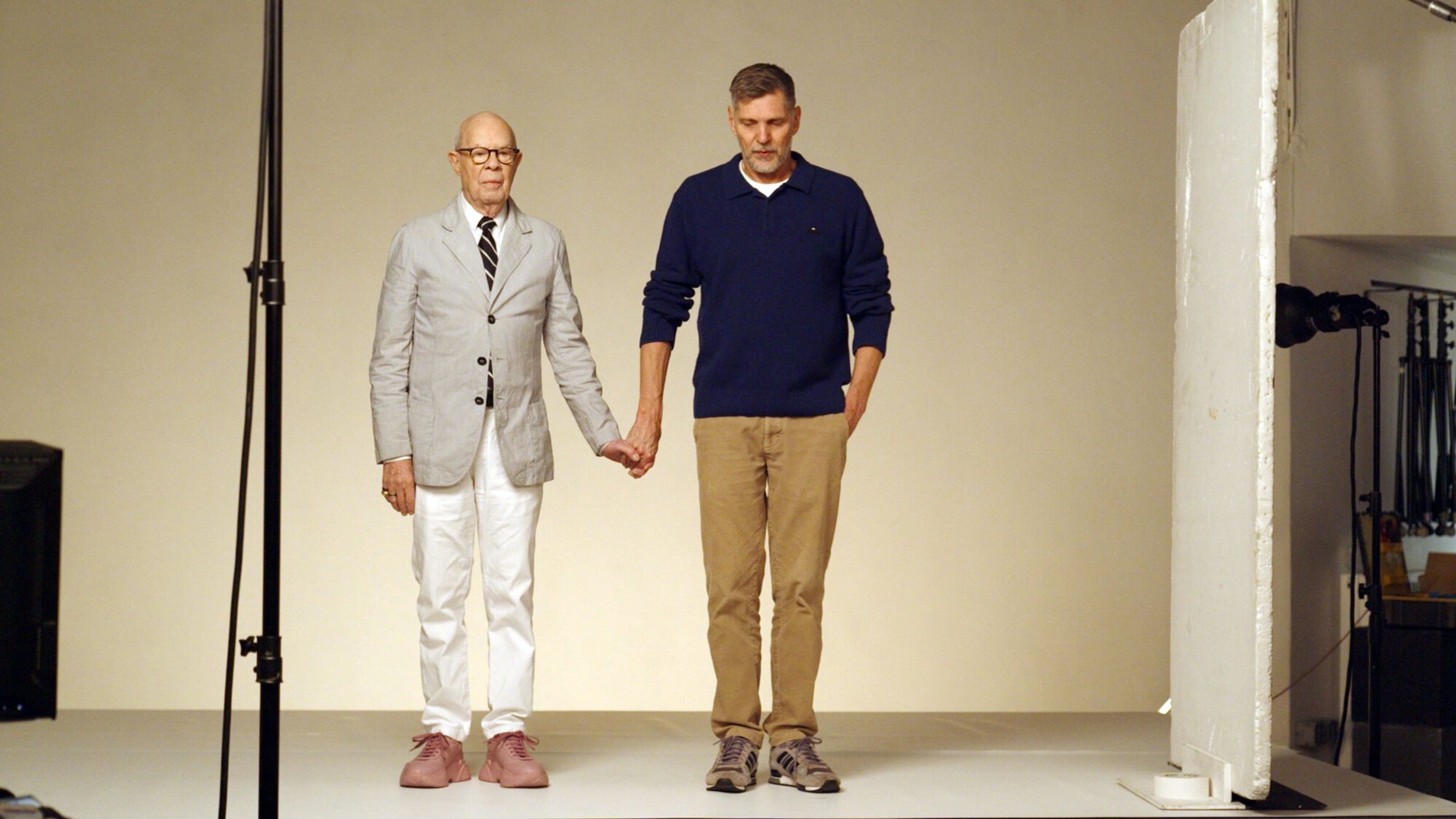
Hans van Manen timeline
Hans van Manen has created over 150 choreographies, including his television ballets. His work is performed by more than 100 dance companies worldwide. This timeline provides an overview of his life and his most significant works. For a complete list of all his choreographies, click here.

1980-1989
1980

Odd one out
Of all the more than 150 works created by Van Manen, there is actually only one that was ever a real flop: Einlage, from 1980. Van Manen initially makes the ballet as an intermezzo for Dutch National Opera’s production of Johann Strauss' Die Fledermaus. When fellow choreographer Toer van Schayk returns a ballet commission not long afterwards, Van Manen is asked to expand the opera choreography into a stand-alone ballet, and is given just six days to do so.
1981

Attraction and rejection
In 1981, Van Manen comes back with a masterpiece. For the occasion of Dutch National Ballet’s twentieth anniversary, he creates Sarcasmen, which is still one of his most acclaimed ‘ballets for two’. With a pianist as the third, important link, the dancers Rachel Beaujean and Clint Farha play a provocative game of attraction and rejection, to Cinq Sarcasmes by Sergei Prokofiev. The duet is not only a triumph for principal dancer Clint Farha, but at one fell swoop it also confirms Beaujean’s name as the master choreographer’s new muse.

Success as a photographer
Alongside his fame as a choreographer, in the eighties and early nineties Van Manen has great success with his second creative passion: photography. He is encouraged in this field by renowned photographers like the American Robert Mapplethorpe and the Dutchman Paul Blanca. Besides the beautiful, revealing portraits he makes of dancers, Van Manen also concentrates on photographing male nudity. The high quality of his photos and his evident personal style mean he is soon ranked among the best in the profession.
1982

Royal to-do
On 2 March 1982, Dutch National Ballet performs (as is often the case) during a state visit by Queen Beatrix and Prince Claus, this time to Bonn. At the last moment, there are changes to the programme. For instance, Hans van Manen’s Sarcasmen is cancelled, which leads to commotion, as the choreographer has a strong suspicion that one scene in the ballet – where the female dancer puts her hand on the male dancer’s crotch – is deemed ‘unsuitable’ by the royal household. Later, according to Van Manen, it appeared that Beatrix herself “had no problem with it whatsoever”, so the cancellation certainly had nothing to do with her.

Pianovariaties
As Pianovariaties II, Sarcasmen forms part of a series of five works: Pianovariaties I to V, created by Van Manen between 1980 and 1984, with which he enjoys great success in these years at Theater Carré. Besides Sarcasmen, the third part, Trois gnossiennes, to music by Erik Satie, also turns out to be a timeless work, which has been performed by numerous star dancers in the Netherlands and abroad since its premiere in 1982. Following the vicious satire of Sarcasmen, a temporary truce between the sexes appears to have been declared in Trois gnossiennes.
1983

Productions for small theatres
In 1983, Van Manen creates two productions for small theatres. For the modern dance company Stichting Dansproductie, he creates the successful Portrait, for the dancer Pauline Daniëls (which then also becomes part of his series Pianovariaties). In the piece, parts of her muscular, slow-moving body are picked out with a spotlight (operated by Henk van Dijk). The work appears to be clearly related to Van Manen’s second love in this period: photography. Van Manen biographer Eva van Schaik writes later, “Portrait is not only a portrait of Daniëls, but equally a self-portrait of Van Manen.”

A hit in Carré and Londen
The biggest crowd-pullers in Dutch National Ballet's 1983/1984 season are the two programmes completely devoted to Van Manen’s work. The first is presented in October 1983 at Theater Carré, comprising In and Out, Adagio Hammerklavier and four of his Pianovariaties: Sarcasmen, Trois gnossiennes, Pose and Portrait (the latter work is performed by guest dancer Pauline Daniëls). The second entails seven performances at the London Coliseum, entitled Hans van Manen Festival, with a slightly different programme, in which Adagio Hammerklavier is alternated with Situation.
1985

VSCD Choreography Prize
In May 1985, the Dutch Association of Theatre and Concert Hall Directors (VSCD) awards its first ever Choreography Prize to Hans van Manen. In the same year, the VSCD’s Golden Theatre Dance Prize (previously awarded to Alexandra Radius and Clint Farha) goes to Pauline Daniëls, partly for her powerful interpretation of Van Manen’s Portrait.

Corps
In 1985, Van Manen creates Corps, to Alban Berg’s Violin Concerto, for Stuttgarter Ballett, with star ballerina and artistic director Marcia Haydée in one of the three leading female roles. In a later interview, Haydée says about these three women, “In my view, they can either stand for the different life phases of one woman, or for three separate women.” And she says the same applies to the male ensemble in the ballet. “The twelve dancers could represent all the men who turn up in a woman’s life of, but they could also jointly represent just one man. That’s the great thing about Hans’ work: he leaves that sort of thing up to the audience’s imagination.”
1986

Opening of the Music Theatre
On 23 September 1986, the Music Theatre Amsterdam (now Dutch National Opera & Ballet) opens its doors with a joint official opening performance by Dutch National Ballet and Dutch National Opera. For Dutch National Ballet’s own opening production, which premieres two days later, Van Manen creates Opening. In the mostly favourable reviews, the critics zoom in on the way Van Manen makes optimal use of the much bigger space afforded by the Music Theatre stage, whereby he also light-heartedly shows how restrictive the previous space was in the Stadsschouwburg.

In the Future - with ingenious designs by Keso Dekker
For Scapino Ballet, in the autumn of 1986, Van Manen creates In the Future, which is now one of the big hits in the repertoires of Introdans and Dutch National Ballet’s Junior Company. The red/green costumes and the ingenious sets by Keso Dekker (Van Manen’s regular designer from 1983) inspire the choreographer to create a sublime interplay of colours and bodies, to the pulsating, jazzy music from David Byrne’s album Music for the Knee Plays. Following a performance by the Junior Company in 2022, the Dutch newspaper NRC writes, “The closing piece is an evergreen by Hans van Manen (..) Since 1986, it has been pure joy to watch the visual effect being exploited to the full, right up to the final moment.”
1987

Amsterdam Cultural Capital of Europe
On 18 May and 12 June 1987, Dutch National Ballet takes part in Amsterdam Cultural Capital of Europe. At the opening event on the first occasion, Hans van Manen’s iconic video ballet Live is presented both live at Theater Carré (attended by Queen Beatrix, Prince Claus and the Ministers of Culture from various European countries) and on a video screen at the Music Theatre. On the second occasion, the company presents the world premiere of Hans van Manen’s Symphonieën der Nederlanden, set to the music of the same name by Louis Andriessen.

Departure from Dutch National Ballet
Well before the premiere of Symphonieën der Nederlanden, Van Manen announces that he will leave his post as resident choreographer with Dutch National Ballet at the end of the 1986/1987 season, after fifteen years in the position. He is mainly dissatisfied with the limited scope offered to him in the company’s programming, partly as consequence of the new ‘block system’ (whereby each production gets a restricted number of performances). He also feels increasingly distanced from Rudi van Dantzig and Toer van Schayk, and from what Van Manen perceives as Van Dantzig’s “Calvinist, often guilt-ridden ballets”.

Return to Nederlands Dans Theater
Although the official appointment to resident choreographer with Nederlands Dans Theater does not take place until September 1988, on leaving Dutch National Ballet Van Manen is immediately welcomed at the company in The Hague, which has then been directed for over ten years by Jiří Kylián (and where Van Manen himself had previously worked as a dancer, choreographer and artistic director). In his second period with Nederlands Dans Theater, which is to last until 2003, he creates almost thirty works for the company (alongside creations for companies like Stuttgarter Ballett and Bayerisches Staatsballett).

Wet Desert
On 9 September 1987, for the opening of the AT&T Danstheater (later Lucent Danstheater) in The Hague, designed by architect Rem Koolkaas, Van Manen creates the occasional ballet Wet Desert for the dancers of Nederlands Dans Theater 2. The ballet is performed partly in the swimming pool that Carel Birnie (managing director of Nederlands Dans Theater for 28 years at the time) has had installed in the theatre. From the stage, the dancers are followed by a cameraman (Henk van Dijk) and when they return to the stage after a high-spirited swimming pool scene – watched by the audience on a big screen – they finish off the ballet in dripping clothes.

Appointed endowed professor
On 1 November 1987, Van Manen receives a three-year appointment as ‘endowed professor of art and culture’ at the Catholic University (now Radboud University), in Nijmegen. In his inaugural address, he talks about his motto ‘Dance expresses dance, and nothing else’, “(..) when I say that dance only expresses dance, I don’t mean that dance has no intellectual moments, no moments where something has to be danced that’s already there in the mind of the creator.”
1989

Black Cake
For the thirtieth anniversary of Nederlands Dans Theater in 1989, Van Manen is invited by artistic director Jiří Kylián to make ‘a real birthday cake’ for the celebrations. Van Manen is immediately enthusiastic, but instead of serving up sweet, pink patisserie, he bakes a frothy, black cake, scented with a layer of sarcasm and drenched in champagne. In his ‘five-layer’ festive cake, he conjures up an image of ‘a chic party, attended by chic people who soon turn out to be not so chic at all’.










